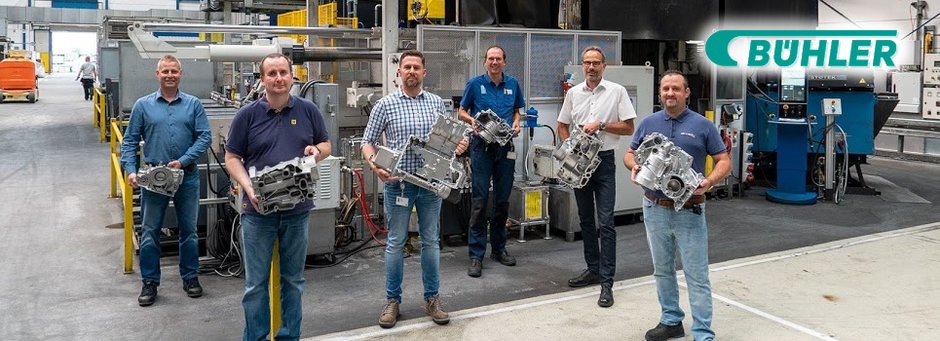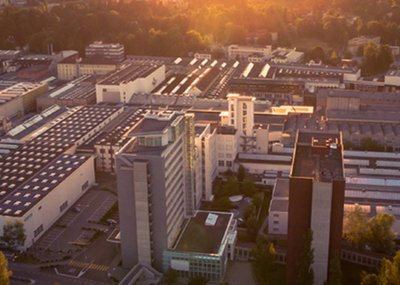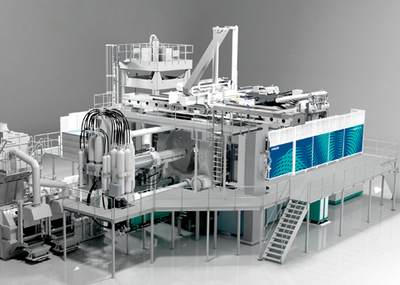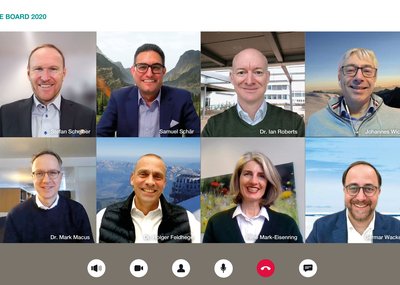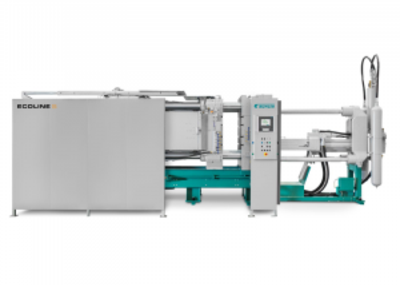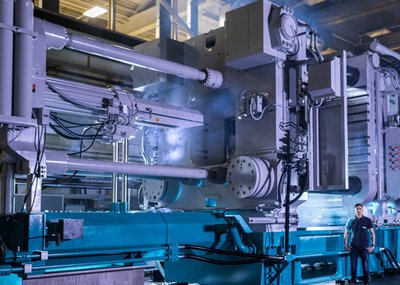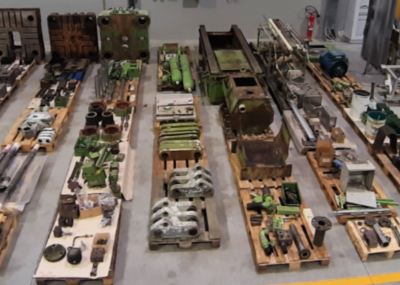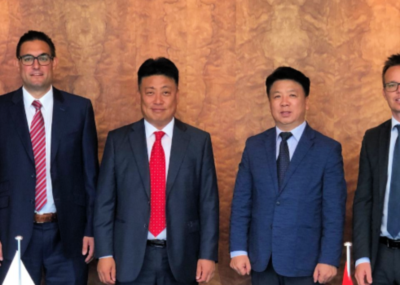When a company is honored for its work six times in a row, it makes you sit up and take notice – especially when it happens in a sector in which the company is one of the smaller players: The foundry in Nordwalde employs just 100 people. Hengst Filtration works on state-of-the-art filtration concepts at 20 locations worldwide with more than 3,000 employees. The products are used in a wide range of industrial air filtration applications, but also in robots, medical clean rooms, air conditioning systems and vacuum cleaners.
Hengst Filtration received its sixth award in January 2020 in the aluminum die-casting competition of the “Gesamtverband der Aluminiumindustrie”. The oil coolant module developed by Hengst for the HDEP (Heavy Duty Engine Platform) commercial vehicle engines of Daimler AG convinced the expert jury. Bühler technology was also involved – as it accounts for nine of ten die-casting cells at Hengst in the range between 800 and 2,200 metric tons locking force.
The award-winning aluminum casting from Hengst had to satisfy a number of complex requirements: Compared to the predecessor module, a high number of variants and many functions have been integrated in the installation space, but all this at a lower weight. The thin-walled die-casting permits consistent lightweight construction, while at the same time fulfilling the highest requirements for leak-tightness and compressive strength and is designed as a lifetime component.
Longevity conserves resources
Longevity is an important keyword at Hengst, as the family-owned company, now in its third generation, has dedicated itself towards the “responsibility to handle resources carefully and by the challenge of making engines, machines and systems cleaner and more efficient with future-oriented filtration solutions, and thus sustainably improving the environment we live in.”
Bühler machines are also designed for longevity, but they are naturally subject to a certain amount of wear and tear in the harsh foundry environment. To extend the service life of its plants, Hengst has already twice overhauled a machine by Bühler in Brescia, Italy. “In addition to the solid machines of the Evolution series, our own good maintenance and service ensured that the systems only had to be given a general overhaul after many years,” says Dr. Andreas Dworog, Group Director Advanced Development at Hengst. “From the remanufacturing of the die-casting machine, we expect that this is a cost-effective alternative to a new investment and that the machine will continue to work reliably for many more years.”
Overhaul as a transparent process
The foundry team enjoyed the transparent process during the overhaul. “In Brescia, the machines were dismantled down to the individual parts; after the joint evaluation we decided together on the further procedure. The acceptance on site, including a functional test of the control system, was equally convincing. “The fact that Bühler also took responsibility for the entire CE Declaration of Conformity for the die-casting cell was another plus.”
About remanufacturing
A full remanufacturing covers the entire die-casting machine. After delivery to one of the Bühler remanufacturing sites in Italy, China, or the U.S., the machine is disassembled into its individual parts. Each individual part is carefully cleaned and checked. During a meeting with the customer on site, decisions are made on which parts are to be replaced, upgraded or renewed. After the general remanufacturing, the machine is repainted, reassembled and carefully tested.
Two decades of cooperation
Dworog himself has held various positions at Hengst since 2002. He first came into contact with Bühler back in the mid-1990s when he was still working in research. The collaboration between Hengst and Bühler dates back to the year 2000 – the “zero hour” when Hengst was still an unknown quantity in the foundry scene and opened a “white foundry” in the open countryside in Münster. White because the walls and machines at Hengst were white, contrary to the foundry tradition of the time.
Bühler is a guarantor for quality
Remanufactured Evolution 84 die-casting cell in the background, in the foreground the Hengst team with the winning parts of the aluminum die casting competition of the last few years.
As a newcomer, the company deliberately relied on Bühler technology because the Swiss company stands for good quality, which in turn should serve as a signal to potential end customers of Hengst. “Nobody has ever managed to produce good parts in the long run with bad tools,” is Dworog’s philosophy. Of course, he adds, a good machine alone is no guarantee for a good end result. This is exactly where the human factor comes into play, which is also essential for the innovations that repeatedly put Hengst on the winners’ podium.
“We have managed to build up a steady team and maintain it,” says Dworog. “And we have always managed to learn from our mistakes. We may not have Leroy Sané or Lionel Messi in the team, but we do have people with us who are constantly working in their fields and who are also developing personally.”
Innovation anchored in the company
Innovation has always played a decisive role at Hengst and, according to Dworog, its importance continues to grow. Just like at Bühler, innovation is therefore also actively promoted in the company, for example by means of an ideas competition such as the one that was announced to all employees worldwide in 2019. The ideas received were evaluated by a panel of experts, then elaborated by teams and finally presented. The three best ideas are currently being pursued as a project. Who knows, perhaps material for award number seven will soon be created here.

